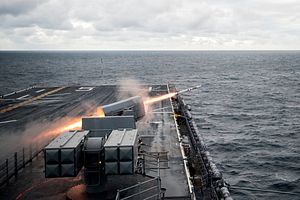Driven partly by rising demand in Asia, global arms sales over the last five years have reached new highs in the post-Cold War-era. According to the Stockholm International Peace Research Institute (SIPRI), arms importers worldwide increased by 8.4 percent between 2012 and 2016, with transfers of “major weapons” in that same period reaching the “highest volume for any five-year period since the end of the cold war.”
The Asian and Oceania regions together represent 43 percent of all global arms imports between 2012 and 2016, according to SIPRI. The region as a whole showed an increase of 7.7 percent in arms imports over the last five-year period for which SIPRI has data. SIPRI’s data reflects a well-documented trend of surging arms imports across the region. In 2013, according to IHS, imports into East Asia surged 25 percent. As The Diplomat observed last year, Vietnam in particular has been fast rising as a prominent arms importer amid growing security challenges in its neighborhood. SIPRI observes in its latest data that Vietnam increased its arms imports by a whopping 202 percent between the 2007-2011 period and the 2012-2016 period.
India held the distinction of continuing to be the world’s largest importer of weapons between 2012 and 2016, with its imports increasing by 43 percent between that period and 2007 and 2011. Amid a poor domestic defense industrial base and an acute sense of insecurity from perceived threats emanating from both China and Pakistan — two nuclear-armed neighbors — India has steadily continued its purchase of arms from overseas, concluding major deals in recent years for fighter aircraft, self-propelled howitzers, attack and heavy lift helicopters, and more.
India’s process of indigenization and modernization is ongoing and has been a particular focus of the government of Prime Minister Narendra Modi, which came to power in May 2014. Modi has promoted the ‘Make in India’ initiative to not only encourage the domestic defense industrial base, but also to negotiate foreign suppliers into acquiescing to so-called offset clauses and technology transfer agreements, enabling the manufacturing of defense equipment in India.
On the export side, not many states on the Asia-Pacific ledger draw attention with the notable exception of China, which increased its share of the global arms export market from 3.8 to 6.2 percent between 2007-2011 and 2012-2016, according to SIPRI. Beijing’s own hastening military modernization has allowed it to offer low-cost alternatives to more expensive Russian and U.S. platforms to developing states seeking to modernize their own arsenals. Pakistan, for instance, imported 54 percent of its arms from China, according to 2014 data released by SIPRI. Russia is another notable exporter to Asian states; India, Vietnam, and China — along with Algeria — accounted for 70 percent of Russian arms exports over the last five years.

































